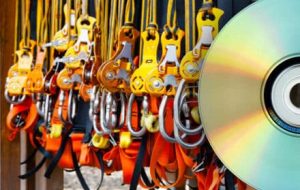Cranes and Derricks Used in Demolition and Underground Construction
Home More Training Resources OSHA Construction Industry Training Requirements Cranes and Derricks Used in Demolition and Underground Construction
OSHA Training Requirements - CRANES AND DERRICKS USED IN DEMOLITION AND UNDERGROUND CONSTRUCTION
This website is not the official or final authority to determine OSHA compliance responsibilities, which are set forth in OSHA standards themselves, and the Occupational Safety and Health Act of 1970. Because OSHA regulations are constantly being added, deleted, and/or revised, you must not rely on this website as the official or final authority of OSHA training requirements; refer to the official OSHA regulations available on OSHA’s website (osha.gov). – See disclaimers.
Section Vacated by OSHA – Refer to 1926.1436 – Derricks for training requirements for derrick operators and personnel.
1926.1500 – 1926.1501 – Cranes and Derricks Used in Demolition and Underground Construction
1926.1501 – Cranes and derricks.
(a) – General requirements.
(1) – The employer shall comply with the manufacturer’s specifications and limitations applicable to the operation of any and all cranes and derricks. Where manufacturer’s specifications are not available, the limitations assigned to the equipment shall be based on the determinations of a qualified engineer competent in this field and such determinations will be appropriately documented and recorded. Attachments used with cranes shall not exceed the capacity, rating, or scope recommended by the manufacturer.
(5) – The employer shall designate a competent person who shall inspect all machinery and equipment prior to each use, and during use, to make sure it is in safe operating condition. Any deficiencies shall be repaired, or defective parts replaced, before continued use.
(6) – A thorough, annual inspection of the hoisting machinery shall be made by a competent person, or by a government or private agency recognized by the U.S. Department of Labor. The employer shall maintain a record of the dates and results of inspections for each hoisting machine and piece of equipment.
(g) – Crane or derrick suspended personnel platforms.
(4) – Personnel Platforms.
(i) – Design criteria.
(A) – The personnel platform and suspension system shall be designed by a qualified engineer or a qualified person competent in structural design.
(ii) – Platform specifications.
(H) – All welding of the personnel platform and its components shall be performed by a qualified welder familiar with the weld grades, types and material specified in the platform design.
(5) – Trial lift, inspections and proof testing.
(iv) – A visual inspection of the crane or derrick, rigging, personnel platform, and the crane or derrick base support or ground shall be conducted by a competent person immediately after the trial lift to determine whether the testing has exposed any defect or produced any adverse effect upon any component or structure.
(6) – Work practices.
(vi) – Employees being hoisted shall remain in continuous sight of and in direct communication with the operator or signal person. In those situations where direct visual contact with the operator is not possible, and the use of a signal person would create a greater hazard for the person, direct communication alone such as by radio may be used.
(8) – Pre-lift meeting.
(i) – A meeting attended by the crane or derrick operator, signal person(s) (if necessary for the lift), employee(s) to be lifted, and the person responsible for the task to be performed shall be held to review the appropriate requirements of paragraph (g) of this section and the procedures to be followed.
(ii) – This meeting shall be held prior to the trial lift at each new work location, and shall be repeated for any employees newly assigned to the operation.

On Site OSHA Training Classes

Online OSHA Training Courses

